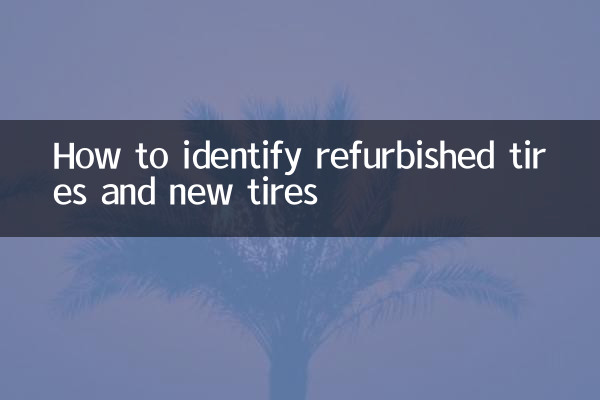How to identify refurbished tires and new tires? Comprehensive analysis and purchasing guide
With the increase in car ownership, tires, as an important component of the vehicle, have attracted much attention. However, refurbished tires are mixed with new tires on the market. If consumers lack discrimination knowledge, they may have safety hazards due to mistaken purchase of refurbished tires. This article will structure the difference between refurbished tires and new tires from the dimensions of appearance, logos, price, etc., and provide practical identification techniques.
1. The core difference between refurbished tires and new tires

| Contrast dimensions | Refurbished tires | New tire |
|---|---|---|
| Production process | Re-tread glue after polishing the old carcass | Brand new rubber raw material one-time molding |
| Service life span | Usually 30%-50% of the original fetus | Complete life cycle (approximately 3-5 years) |
| Safety factor | Prone to risk of delamination and tire blowout | Comply with national standards |
| Price range | 40%-60% below the market price | Official brand pricing |
2. 4 steps to quickly identify the refurbished tire
1. Observe the connection between the tread and the sidewall
Due to process limitations, there are often obvious seams or unevenness at the junction of the tread and the sidewall; the new tire will naturally have no burrs when transitioning.
2. Check the tread drain
The old tire wear marks may remain at the bottom of the refurbished tire drain tank, and a uniform mold texture can be seen in the new tire tank.
3. Verify the DOT authentication mark
| Identification Type | Refurbished tire features | New tire features |
|---|---|---|
| DOT encoding | Possibly blurred or secondary engraved | Clear laser printing |
| Production date | Not consistent with the degree of carcass aging | Matching with sales time |
4. Test the rubber elasticity
Use your nails to gently press the tread, and the rubber of the new tire rebounds quickly; the refurbished tire aging due to the aging of the gel, and the compression marks fade slowly.
3. Authoritative data reveals the current situation of the industry
| Statistical items | data | source |
|---|---|---|
| China's refurbished tire market share | About 12% (2023) | China Tire Renovation Association |
| Refurbished tire accident rate | 3.8 times higher than newer tires | Report of the General Administration of Quality Supervision, Inspection and Quarantine |
| Regular refurbished tire marking rate | Only 43% | Consumer Association Scan the test |
4. Purchase suggestions and precautions
1.Identify the formal channels: Priority is given to brand authorized stores and quality inspection reports are required
2.Beware of price traps: Tires below the market price 50% need to be checked
3.Utilize official verification: Michelin, Bridgestone and other brands provide tread ID verification services
4.Regular inspections: It is recommended to check tire wear every 5,000 kilometers
Conclusion:According to recent hot incident monitoring, there have been cases of refurbished tires impersonating new tires in many places. Mastering the identification methods of this article and combining them with official anti-counterfeiting verification can effectively avoid risks. It is no small matter to be safe. It is recommended that car owners choose regular new tires to ensure driving safety.

check the details

check the details